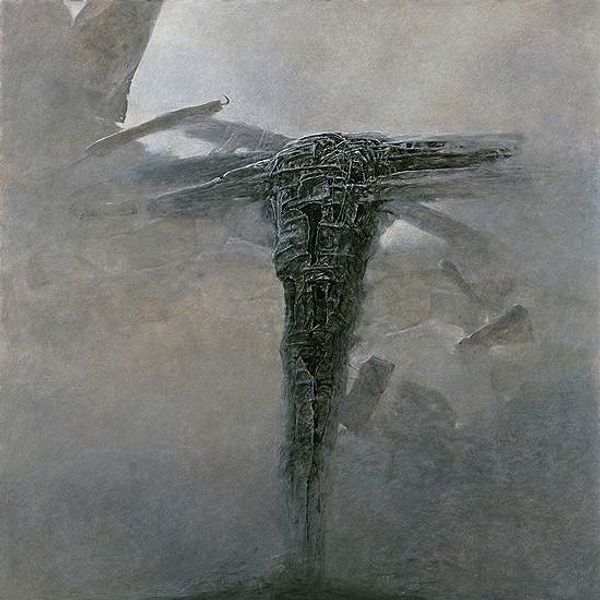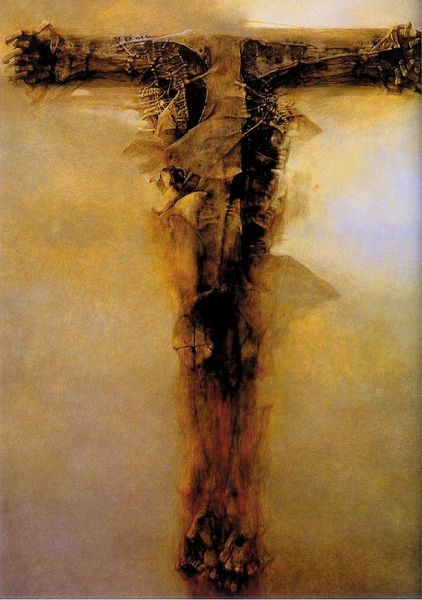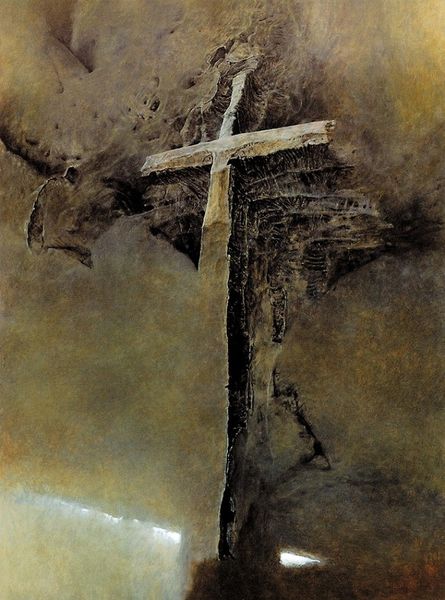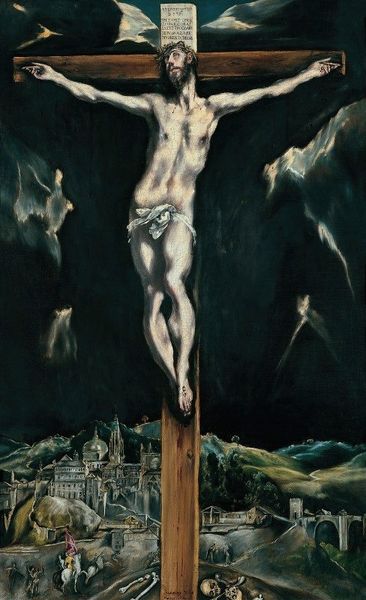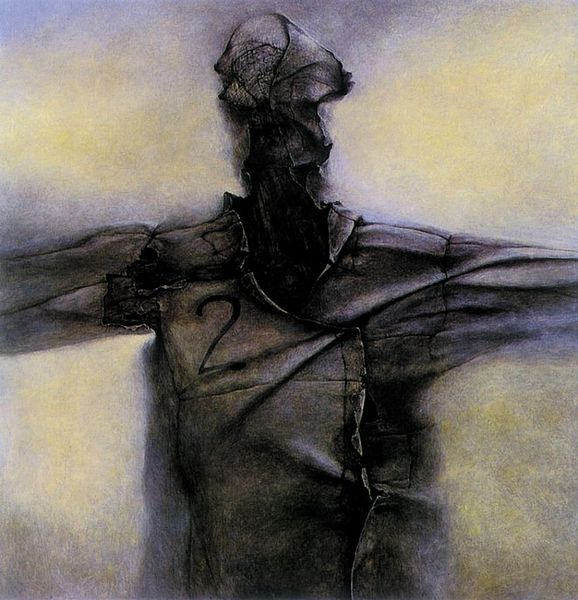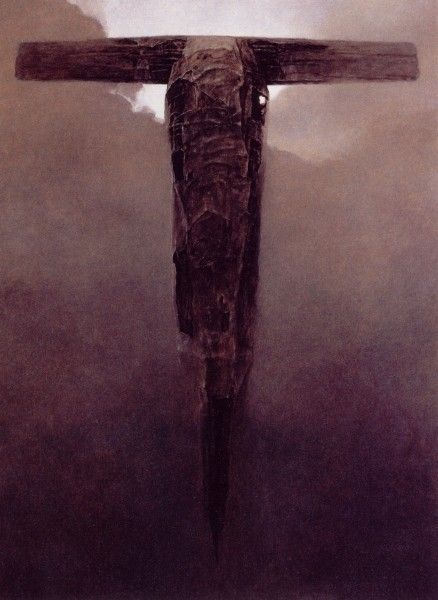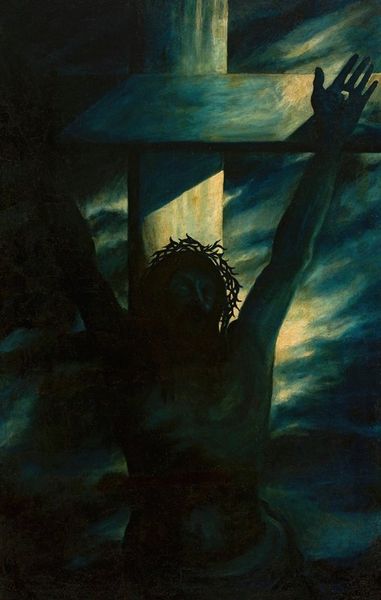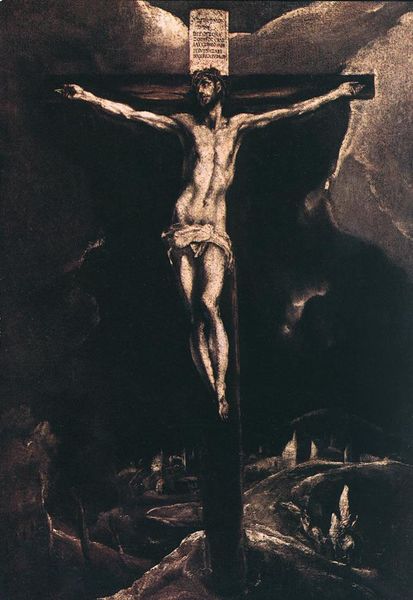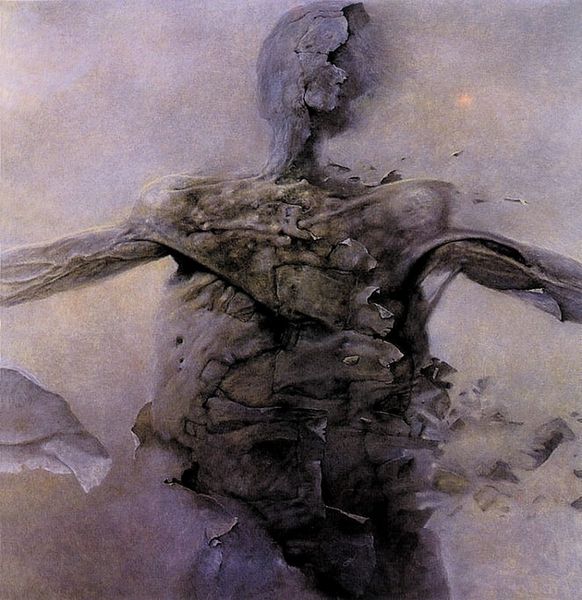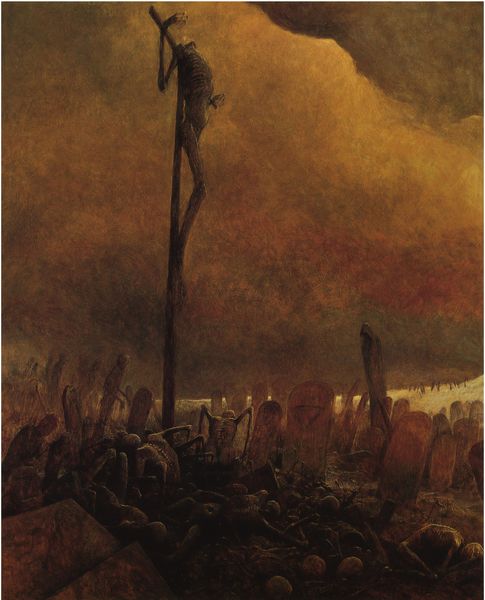
painting, oil-paint
#
allegories
#
abstract expressionism
#
narrative-art
#
painting
#
oil-paint
#
landscape
#
figuration
#
form
#
neo expressionist
#
neo-expressionism
#
matter-painting
#
abstraction
#
symbolism
#
surrealism
Copyright: © The Historical Museum in Sanok (Poland) is the exclusive owner of copyrights of Zdzisław Beksiński's works.
Editor: So, this is an untitled oil painting by Zdzislaw Beksinski. It’s... haunting, wouldn’t you say? The skeletal figure draped in what looks like tattered fabric. How would you interpret this work? Curator: As a materialist, I see a profound exploration of decay and the tangible remnants of existence. Consider the very stuff of this painting: oil paint, meticulously layered to create textures suggesting decomposition. This isn't merely depicting decay; it's *performing* it through the manipulation of materials. How does Beksinski's choice of medium, the slowness of oil, influence our understanding of time and deterioration? Editor: That's an interesting point. I was so focused on the figure, I didn’t think about the medium itself reflecting the theme. The tattered cloth seems significant too. Is it a shroud, a flag... or both? Curator: Precisely. What about the societal context in which these materials were produced? Where did this canvas originate? Where was the oil paint manufactured? The “where” and “how” of creation deeply impact meaning. Also, consider the labour—the artist's repetitive, almost obsessive application of paint to mimic the relentless process of entropy. It shifts our focus from symbolic readings towards an understanding rooted in tangible reality. Editor: So, you're saying we should focus less on what it *represents* and more on how it was *made* and where the materials came from? Curator: Exactly! How the art functions materially. Beksinski's layering mirrors time’s own accumulations and abrasions, challenging any romantic notions of artistic creation by forcing us to confront uncomfortable processes: attrition, ruin. This isn't just *allegories*, it’s art as a confrontation with making and unmaking, literally built through manual processes reflecting a gritty form of labour. Editor: That really shifts my perspective! I came in thinking about symbolic interpretations, but you've given me a new way to think about the process and the raw materials as integral to its message. Thanks! Curator: My pleasure! Now you have different questions to ask of any work of art you see, focusing on means, work, and materials to ground it in a real-world, human process.
Comments
No comments
Be the first to comment and join the conversation on the ultimate creative platform.
